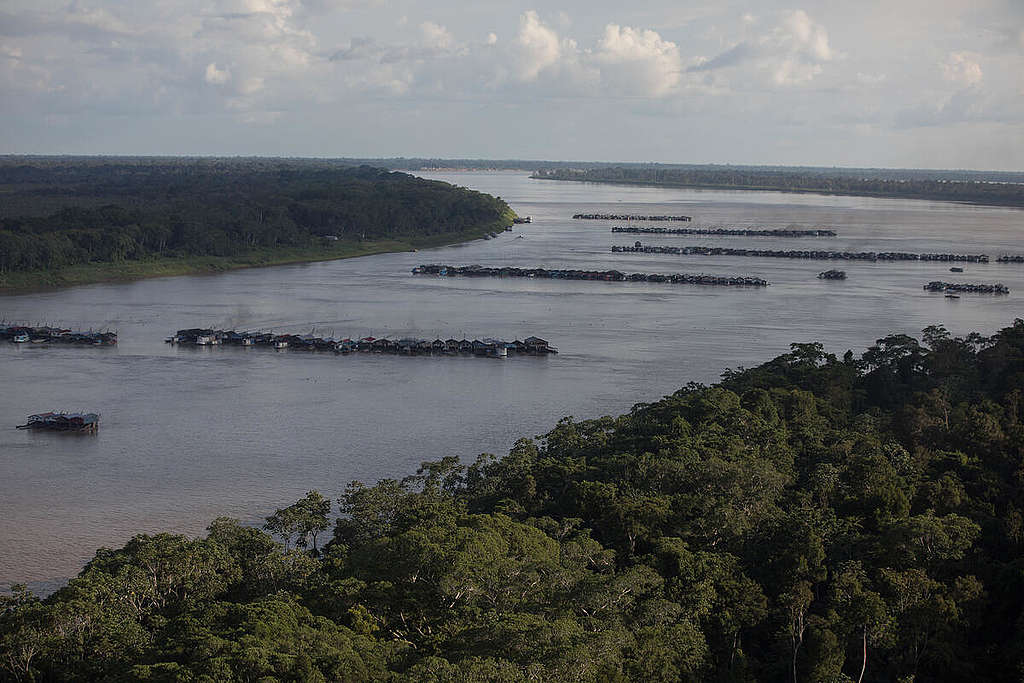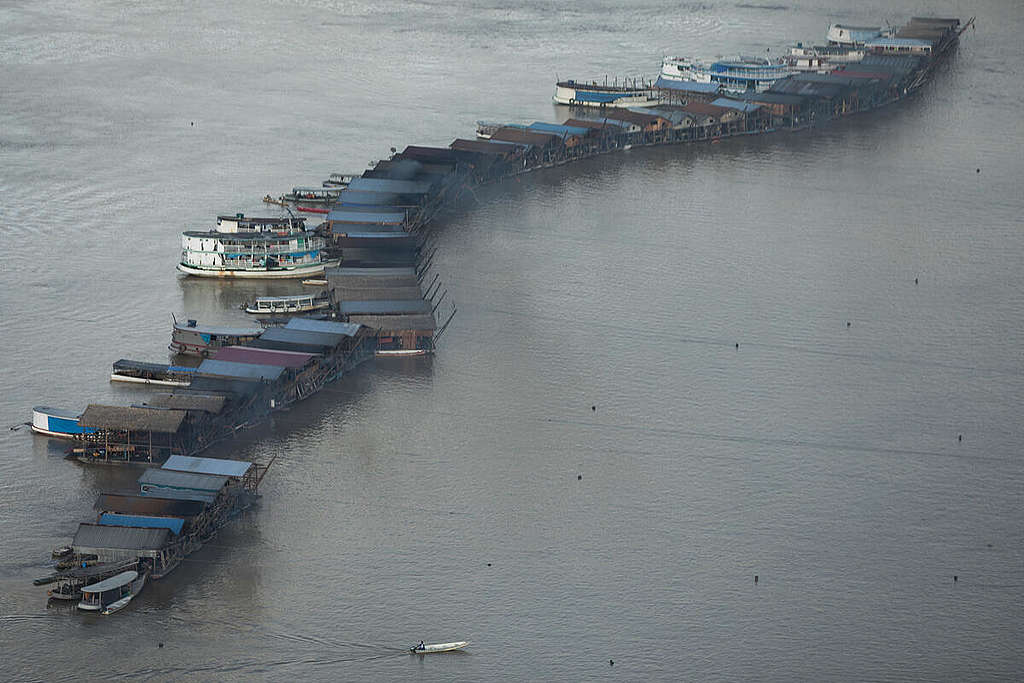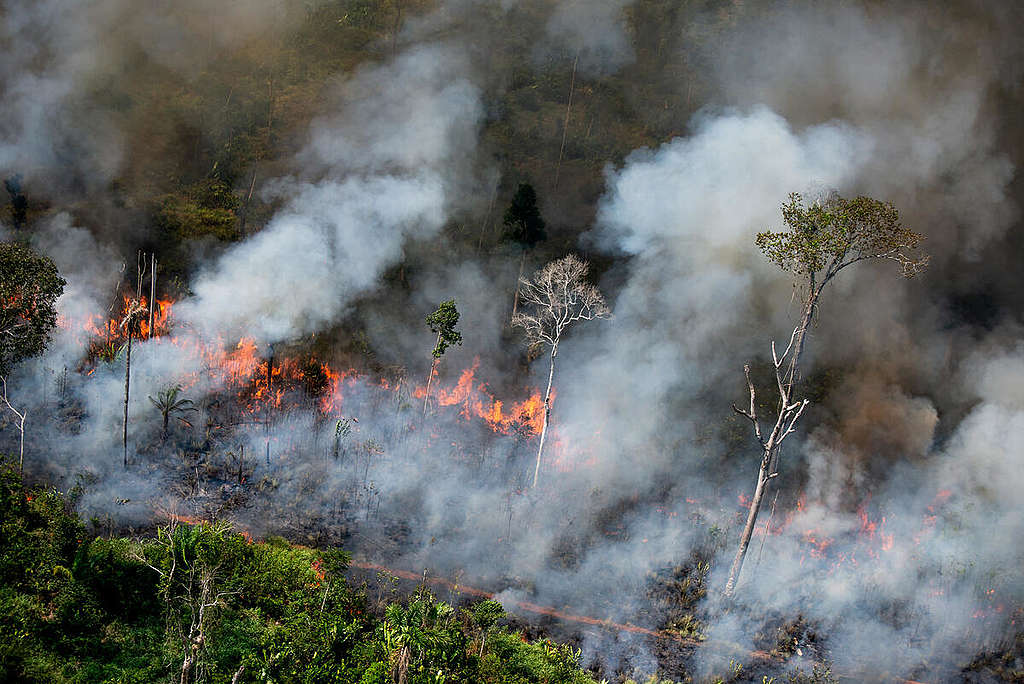Illegal mining in the Amazon – a threat to local communities’ health and livelihoods – continues to advance in the region. Last week, rumours that gold was found in the Madeira River, in the south of the Amazon, caused hundreds of rafts to head to the region, causing panic to those who know how destructive the mining is to the rivers of the Amazon.

The unusual movement caught the attention of the local population and showed how the miners operate on the Madeira River: without any discretion or concern the illegal exploitation of gold would make the authorities take any action. The rafts were located in the city of Autazes, 110km from Manaus, the capital of the Amazonas state. The invasion of miners in the region was documented by Greenpeace Brazil last Tuesday, 23 November, which confirmed the illegal activity.
The miners came from other cities in the Amazon such as Humaitá, where they count on the support of businessmen and politicians who have been promoting this illegal activity for many years. However, the exploration was met with concern about the environmental damage that causes to the health and livelihoods of those who depend on the river, since mining for gold releases mercury and contaminates the water.

Questioned by the press, both the Brazilian Institute for the Environment and Sustainable Natural Resources (Ibama) and the Amazonas Environmental Protection Institute (Ipaam) – reported that they were aware of what was happening and were investigating. But with Bolsonaro’s administration stripping down resources from such government bodies and enabling the destruction of the environment, illegal miners feel empowered to carry on with little concern.
Development over the weekend
With the images registered by Greenpeace Brazil and the pressure generated by national and international press, the Brazilian government had to take action. On Sunday, 28 November, the Brazilian Federal Police and IBAMA destroyed some 70 rafts located in the Madeira River. Most of the equipment had already been moved from the mining location into nearby areas in the river, trying to escape from the investigation. 10 illegal miners were arrested while several others escaped into the forest.
The police operation would have been more effective if the Vice-President of Brazil, Hamilton Mourão hadn’t announced publicly that the government was getting ready to take measures. The tip made the miners scatter around the region and allowed many to escape with their equipment.
Illegal mining has exploded in the Amazon in recent decades. According to a study published by MapBiomas in August, the area mined in Brazil increased sixfold between 1985 and 2020, going from 31 thousand to 206 thousand hectares. Mapbiomas also disclosed that 93.7% of the mines in Brazil are in the Amazon.
This violent expansion has occurred, especially in recent years, in Indigenous territories and conservation units – which is prohibited by the Brazilian constitution. Also according to MapBiomas, between 2010 and 2020, the area occupied by the miners within Indigenous lands grew 495%; in conservation units, the growth was 301%. In 2020, half of the mining activities in the country happened in conservation units or Indigenous lands.
The Brazilian government has the means to fight environmental crimes, protect the forest and all those who depend on it for their livelihood. But it lacks the will to do so. We’re living in a climate and environmental crisis. The destruction of the Amazon and its water is a threat to biodiversity, the lives of Indigenous Peoples and traditional communities, and to the global climate. We can’t allow more destruction to continue.

We must protect the Amazon and the Indigenous Peoples fighting for it. Join the movement!

No comments:
Post a Comment
Note: Only a member of this blog may post a comment.